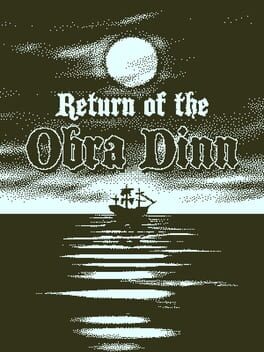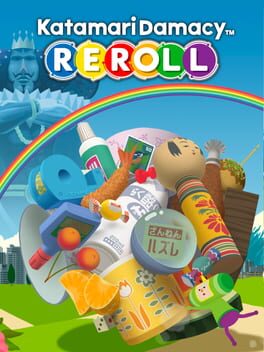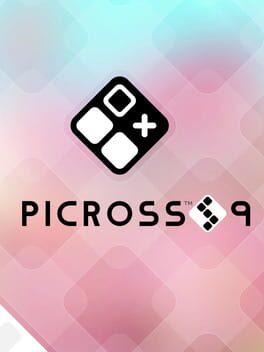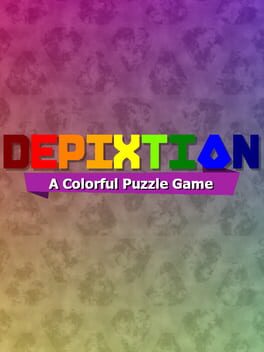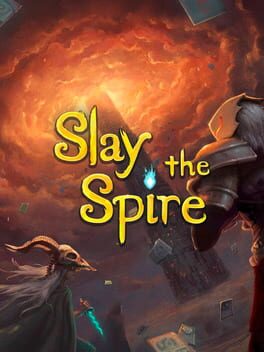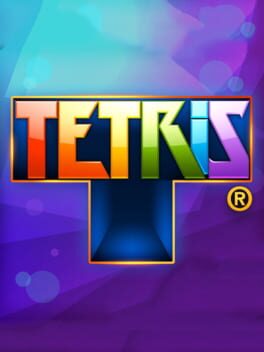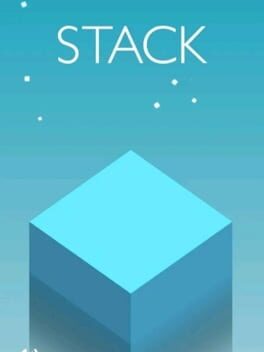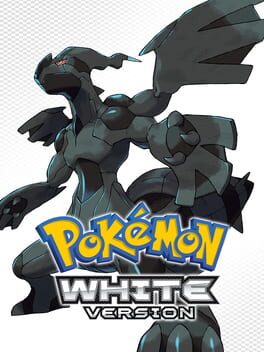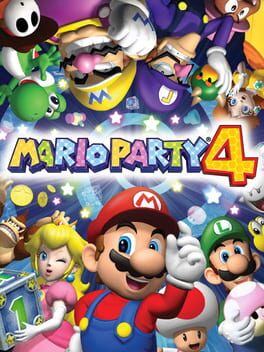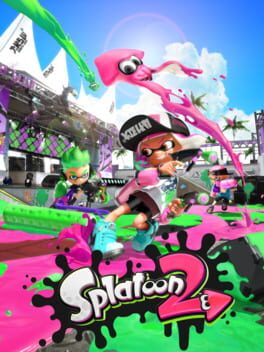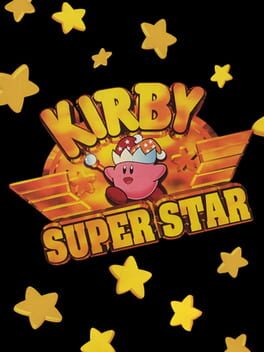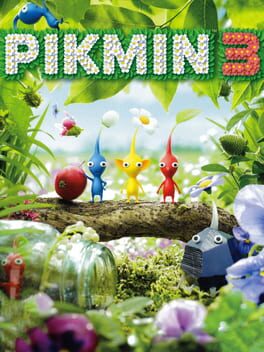Caprizant
A beautiful game. You can feel the heart put into it. Won't spoil anything here, I want the tips below to be read by newcomers, and the game says what it needs to way better than I can. Though as someone who has trouble interpreting nonlinear stories, I got a lot more out of it when I read online discussions after the fact. My problem, not the game's, and I suggest you do the same if you also had trouble.
The game doesn't onboard you to its systems very well, and the UX isn't great. I know for a fact they must've thought of this mechanic and rejected it, but it really could've used a memory log. It took like 5 hours of gameplay for me to really get into the rhythm of navigating to the memories I wanted to review in a timely fashion.
Some general tips for new players:
- Make use of the few shortcuts and time-saving tools the game gives you. Bookmarks are your friend. There's a keybind for the table of contents in the journal; find that keybind and use it judiciously.
- If some detail seems like it could be used to identify a character, then it can be. There are very few extraneous details.
- Play with friends. It's a delightful and unique experience.
The game doesn't onboard you to its systems very well, and the UX isn't great. I know for a fact they must've thought of this mechanic and rejected it, but it really could've used a memory log. It took like 5 hours of gameplay for me to really get into the rhythm of navigating to the memories I wanted to review in a timely fashion.
Some general tips for new players:
- Make use of the few shortcuts and time-saving tools the game gives you. Bookmarks are your friend. There's a keybind for the table of contents in the journal; find that keybind and use it judiciously.
- If some detail seems like it could be used to identify a character, then it can be. There are very few extraneous details.
- Play with friends. It's a delightful and unique experience.
2023
1998
I greatly enjoyed my time with this game. However, I would not have enjoyed it without save states. It was much more flawed than I was expecting, even for an early 3D game; the fact that music note progress resets upon leaving a level or dying is the worst part.
However, the game was clearly experimental for its time, and there's many great ideas here. The game is especially adept at hiding its collectibles. I'd usually collect about 60-70 notes in a world and half the jiggies, and then spend another hour or two scrounging around for the rest. I especially enjoyed how clever they were with hiding sub-areas throughout each map to give it more depth.
Having played Mario Odyssey just before this, I feel like Odyssey refines this level design concept really well: Big, open playgrounds with loads of collectibles, where you kinda just do whatever's in front of you rather than a specific mission. Only thing I think it could use is more collectibles that provide varied rewards, just like Banjo does with things like feathers, eggs, and jinjos.
Grunty's Lair is the best hub world I've ever seen in a video game. I think the fact that level entrances and level unlocks are separate places really helps the design in this regard; it lets them provide meaningful rewards for exploration throughout the entire lair. There's not a single room that feels like a waste of time.
I enjoy that laying eggs is accompanied by a fart sound effect.
However, the game was clearly experimental for its time, and there's many great ideas here. The game is especially adept at hiding its collectibles. I'd usually collect about 60-70 notes in a world and half the jiggies, and then spend another hour or two scrounging around for the rest. I especially enjoyed how clever they were with hiding sub-areas throughout each map to give it more depth.
Having played Mario Odyssey just before this, I feel like Odyssey refines this level design concept really well: Big, open playgrounds with loads of collectibles, where you kinda just do whatever's in front of you rather than a specific mission. Only thing I think it could use is more collectibles that provide varied rewards, just like Banjo does with things like feathers, eggs, and jinjos.
Grunty's Lair is the best hub world I've ever seen in a video game. I think the fact that level entrances and level unlocks are separate places really helps the design in this regard; it lets them provide meaningful rewards for exploration throughout the entire lair. There's not a single room that feels like a waste of time.
I enjoy that laying eggs is accompanied by a fart sound effect.
2022
2019
This was great! Gave me a good few months of bedtime Picross.
The controls are much more sane than the color puzzles in the Picross S series. The colors also give you additional feedback, which is helpful; if you're stuck, just find a section of the puzzle where the colors make sense.
About the only complaint I have is that the detection for when the numbers should be greyed out on the sides is a little iffy. I get that it's harder to program with the two shades of colors, but it still tripped me up more than it should have when I had one section of color blocked out but it wasn't greyed out on the side.
Other than that, the pictures are really nice when you finish them, and the music is incredible. Literally the best music I've ever heard in a nonogram game. Going back to Picross music after finishing this was tough.
The controls are much more sane than the color puzzles in the Picross S series. The colors also give you additional feedback, which is helpful; if you're stuck, just find a section of the puzzle where the colors make sense.
About the only complaint I have is that the detection for when the numbers should be greyed out on the sides is a little iffy. I get that it's harder to program with the two shades of colors, but it still tripped me up more than it should have when I had one section of color blocked out but it wasn't greyed out on the side.
Other than that, the pictures are really nice when you finish them, and the music is incredible. Literally the best music I've ever heard in a nonogram game. Going back to Picross music after finishing this was tough.
2019
2009
Exactly what you'd expect from a mobile version of Tetris: a little jank, but there's very little to fuck up. Controls are finicky. Pieces change the direction they're rotating for seemingly no reason, which is hell at high levels. Nice presentation, though.
It told me today was National Hug a Dog Day, which no other app has done for me yet.
It told me today was National Hug a Dog Day, which no other app has done for me yet.
2016
2018
This review contains spoilers
In the subway station in Nimbasa City, there's one train line not reserved for the Battle Subway. If you take this line, you'll find yourself in a small town in northwestern Unova called Anville Town. This town is optional. Many players probably went several playthroughs without ever finding it. It consists of a couple buildings, a railroad turntable, and a bridge.
On weekends, the bridge is packed with people. You can trade various items with these people, and it's nice, but it's not really anything super important. The turntable in the center of town has a different train car on it every day, and an NPC will tell you details about whichever car is on the turntable.
One of the cars that can show up on the turntable is the one that takes you to Anville Town in the first place. If you talk to the NPC about this car, he'll say, "Isn't it just so cute? This one is a little slow and heavy. When it runs, the whole train sways. The train car is the same model as a Single Train. Because it is an old train car, I hear the maintenance is hard, but it's the one I always ride, because I loved it as a kid!"
The music that plays in this town is unique—as is every other town theme in Unova. There are no repeat tracks between towns. The Anville Town theme is serene, perfect for late-night background noise to calm the nerves. The song itself is called "A Lullaby for Trains."
A lady in town can be seen playing the flute. And if you walk close to her, a flute gets added to the arrangement.
---
In my opinion, Pokémon Black & White are the peak of what the series is capable of. They certainly have flaws—and at first, those flaws were all I could see. Some of the Pokémon designs are outright ugly, and many of them borrow concepts from previous generation Pokémon (particularly from Kanto). The palette of the region is largely muddy and muted. The early routes are littered with bad Pokémon, and I often find myself getting a second team member very late, even after the second gym.
If someone told me Generation V was their least favorite, I'd understand. It's how I felt for a long time, and I remember it getting a lot of flak when it was new. But I'm glad that its reputation has turned around in recent years, and that more people are starting to see its merits.
---
Mechanically, the starter trio of Unova is my favorite of any generation. Emboar plays very differently from the other Fire/Fighting starters, being more of a glass cannon than a sweeper. It always makes me sad when people see the type and don't give it a chance, because it's actually very fun to play!
Serperior, on the other hand, is my favorite Pokémon of all time. Its unorthodox combination of high speed and high defenses makes for a very unique single-player tank, with the ability to whip out first-turn status moves like they're nothing.
Samurott has a bit less mechanical identity than the other starters, but is still a nice alternative whose movepool has a fun range of secondary effects.
Unovan Pokémon tend to have quite unique playstyles. There are a lot of duds in the dex—Unfezant, Maractus (it's cute though), Mandibuzz, Heatmor, Liepard, to name a few. But there are many more that I could use on several playthroughs and never get bored.
For example, Krookodile is a very well-loved Pokémon with good stats and a wide movepool. It also has two abilities that are both equally good in very different ways; Intimidate helps it tank hits, and Moxie turns it into a fearsome sweeper if it can get going. You could play Krookodile across two different playthroughs and get two very different experiences.
---
I've probably played this game 8 or 9 times, and I'm still finding new things to appreciate about Pokémon I previously thought were worthless.
I always hated Vanilluxe like everyone else—until I realized that it had great mixed attacking stats, just enough speed and bulk to make use of those stats, and that the two types of moves it learns happen to be super-effective on the entire latter half of the game's gyms. Now I love it, I appreciate its silly design, and I name it Jerry on every playthrough that I use it (updating to Ben+Jerry when it evolves).
Just this last playthrough, I realized that I had been completely neglecting a few Pokémon that may actually be really fun to use in a single-player context. So many times while building teams for this game, I thought, "this Pokémon would be so much better if it had a good buffing move." Then I realized that X items are basically buffing moves that always go first, always raise the relevant stat by two stages, and—unlike some other games in the series—are repeatably and cheaply purchasable early on, in Nacrene City.
Even though I'm still working through the postgame at the moment, I'm already imagining a new playthrough where I make use of new Pokémon with this trick. You could use Klinklang with X Specials to make use of its slightly bigger special movepool, or use X items on Audino to make its absolutely massive movepool more usable. I don't know for certain if this strategy will work out, but that's the fun of a new playthrough!
---
The world of Unova is a place I can visit again and again. Each town has its own identity, a place that feels lived in & vibrant. Nacrene City is built from disused warehouses, and it has a local museum and a vibrant art scene. The residents of Lacunosa Town stay inside at night, fearing a monster. Nimbasa City is a hub for the entertainment industry, with a musical theater, sports stadiums, a theme park (which houses the gym), and a large train station to bring the tourists in.
The game's art style does a very good job at portraying the character & charm of these locations. The use of 3D models to represent scenery is much more pronounced here than it was in the Generation IV games, and the visual effect works well. In my opinion, the games strike the perfect balance between 2D and 3D, a balance that was somewhat lost in the transition to full 3D. There are certainly things I love about all of the 3D games—but there's no denying that the 3DS games run like ass, and the Switch games tend to have rather poor texture work.
Here, the game runs smooth as butter, the battle system is lightning fast, and the fully animated sprites help make each Pokémon feel alive. The animated sprites can be a little off-putting at first—all the aliasing around the edges kinda reminds me of early seasons of Ed Edd n Eddy, with their squiggly-line style of animation—but I've grown to really love it otherwise. I still kinda wish the series improved upon this concept, at least for a couple more generations. It would've been especially cool to see this style brought to a region with a less moody tone & muddy palette, like Alola.
Sun & Moon are my next favorite games in the series, and they really share quite a lot with Black & White—a bigger emphasis on story, a new approach for the gameplay, and a surprisingly good cast of characters for a Pokémon game. In fact, on that last point, I'd actually say Sun & Moon have Black & White beat. While N is probably my favorite human character in the series and Bianca is one of my favorite rivals, I'm not the biggest fan of Cheren, and there's not really any other characters in the story with a shred of depth.
---
On the note of N: I think he is single-handedly what makes the story of Black & White work for me. Honestly, the plot of Black & White gets praised a lot, and while I think it's good, I don't think it's quite as good as people make it out to be.
The whole Team Plasma plotline is basically the same rigmaroll of "villain has reasonable goals, proceeds to kick babies and destroy crops to prove they're bad" that you see in so many games these days. Team Plasma spread the idea that Pokémon are abused by people, and no one in the good corner even attempts to make a counterargument to that. It's mostly just "prove that Pokémon like their trainers by beating Team Plasma in a battle, or something." No big deal, it's a Pokémon game; there's just not as much here as people would make you think.
However, N's character arc is my favorite part of the game.
This game explores abuse in a surprisingly tactful way. N has been manipulated by Ghetsis from childhood. Ghetsis exposed N only to abused Pokémon, in the hopes that someday he would become a charismatic leader who would convince people to release their Pokémon. He plays N for his own personal benefit, and does not give a rat's ass about N's thoughts and desires. When N begins to falter on Ghetsis, Ghetsis calls him "a warped, defective boy who knows nothing but Pokémon," apparently without a shred of self-awareness. Seeing N reject Ghetsis's worldview, broaden his own horizons, and start to see the good in the world is cathartic every playthrough.
It's certainly not complex. It's not a deep dive into the dynamics of abuse, and it's not all that thought-provoking. Really, it's mostly confined to the final scene, as that's when the game finally admits that Ghetsis is the bad guy. But for a big series to pull a character like N off without forcing forgiveness on them is cathartic. I think, more than anything, it's what makes the story of Black & White work.
---
In the modern day, I'd suggest playing White Version over Black; the version-exclusive content is much better, and I think the story is slightly more symbolically interesting. Also, the White version of Opelucid City is much more cozy.
That's about all I have to say on this game. It's a great Pokémon game, highly replayable, and has a surprising amount of mechanical depth. The story, while simple, is mostly well-executed. It's about the most perfectly-crafted a Pokémon game can be.
On weekends, the bridge is packed with people. You can trade various items with these people, and it's nice, but it's not really anything super important. The turntable in the center of town has a different train car on it every day, and an NPC will tell you details about whichever car is on the turntable.
One of the cars that can show up on the turntable is the one that takes you to Anville Town in the first place. If you talk to the NPC about this car, he'll say, "Isn't it just so cute? This one is a little slow and heavy. When it runs, the whole train sways. The train car is the same model as a Single Train. Because it is an old train car, I hear the maintenance is hard, but it's the one I always ride, because I loved it as a kid!"
The music that plays in this town is unique—as is every other town theme in Unova. There are no repeat tracks between towns. The Anville Town theme is serene, perfect for late-night background noise to calm the nerves. The song itself is called "A Lullaby for Trains."
A lady in town can be seen playing the flute. And if you walk close to her, a flute gets added to the arrangement.
---
In my opinion, Pokémon Black & White are the peak of what the series is capable of. They certainly have flaws—and at first, those flaws were all I could see. Some of the Pokémon designs are outright ugly, and many of them borrow concepts from previous generation Pokémon (particularly from Kanto). The palette of the region is largely muddy and muted. The early routes are littered with bad Pokémon, and I often find myself getting a second team member very late, even after the second gym.
If someone told me Generation V was their least favorite, I'd understand. It's how I felt for a long time, and I remember it getting a lot of flak when it was new. But I'm glad that its reputation has turned around in recent years, and that more people are starting to see its merits.
---
Mechanically, the starter trio of Unova is my favorite of any generation. Emboar plays very differently from the other Fire/Fighting starters, being more of a glass cannon than a sweeper. It always makes me sad when people see the type and don't give it a chance, because it's actually very fun to play!
Serperior, on the other hand, is my favorite Pokémon of all time. Its unorthodox combination of high speed and high defenses makes for a very unique single-player tank, with the ability to whip out first-turn status moves like they're nothing.
Samurott has a bit less mechanical identity than the other starters, but is still a nice alternative whose movepool has a fun range of secondary effects.
Unovan Pokémon tend to have quite unique playstyles. There are a lot of duds in the dex—Unfezant, Maractus (it's cute though), Mandibuzz, Heatmor, Liepard, to name a few. But there are many more that I could use on several playthroughs and never get bored.
For example, Krookodile is a very well-loved Pokémon with good stats and a wide movepool. It also has two abilities that are both equally good in very different ways; Intimidate helps it tank hits, and Moxie turns it into a fearsome sweeper if it can get going. You could play Krookodile across two different playthroughs and get two very different experiences.
---
I've probably played this game 8 or 9 times, and I'm still finding new things to appreciate about Pokémon I previously thought were worthless.
I always hated Vanilluxe like everyone else—until I realized that it had great mixed attacking stats, just enough speed and bulk to make use of those stats, and that the two types of moves it learns happen to be super-effective on the entire latter half of the game's gyms. Now I love it, I appreciate its silly design, and I name it Jerry on every playthrough that I use it (updating to Ben+Jerry when it evolves).
Just this last playthrough, I realized that I had been completely neglecting a few Pokémon that may actually be really fun to use in a single-player context. So many times while building teams for this game, I thought, "this Pokémon would be so much better if it had a good buffing move." Then I realized that X items are basically buffing moves that always go first, always raise the relevant stat by two stages, and—unlike some other games in the series—are repeatably and cheaply purchasable early on, in Nacrene City.
Even though I'm still working through the postgame at the moment, I'm already imagining a new playthrough where I make use of new Pokémon with this trick. You could use Klinklang with X Specials to make use of its slightly bigger special movepool, or use X items on Audino to make its absolutely massive movepool more usable. I don't know for certain if this strategy will work out, but that's the fun of a new playthrough!
---
The world of Unova is a place I can visit again and again. Each town has its own identity, a place that feels lived in & vibrant. Nacrene City is built from disused warehouses, and it has a local museum and a vibrant art scene. The residents of Lacunosa Town stay inside at night, fearing a monster. Nimbasa City is a hub for the entertainment industry, with a musical theater, sports stadiums, a theme park (which houses the gym), and a large train station to bring the tourists in.
The game's art style does a very good job at portraying the character & charm of these locations. The use of 3D models to represent scenery is much more pronounced here than it was in the Generation IV games, and the visual effect works well. In my opinion, the games strike the perfect balance between 2D and 3D, a balance that was somewhat lost in the transition to full 3D. There are certainly things I love about all of the 3D games—but there's no denying that the 3DS games run like ass, and the Switch games tend to have rather poor texture work.
Here, the game runs smooth as butter, the battle system is lightning fast, and the fully animated sprites help make each Pokémon feel alive. The animated sprites can be a little off-putting at first—all the aliasing around the edges kinda reminds me of early seasons of Ed Edd n Eddy, with their squiggly-line style of animation—but I've grown to really love it otherwise. I still kinda wish the series improved upon this concept, at least for a couple more generations. It would've been especially cool to see this style brought to a region with a less moody tone & muddy palette, like Alola.
Sun & Moon are my next favorite games in the series, and they really share quite a lot with Black & White—a bigger emphasis on story, a new approach for the gameplay, and a surprisingly good cast of characters for a Pokémon game. In fact, on that last point, I'd actually say Sun & Moon have Black & White beat. While N is probably my favorite human character in the series and Bianca is one of my favorite rivals, I'm not the biggest fan of Cheren, and there's not really any other characters in the story with a shred of depth.
---
On the note of N: I think he is single-handedly what makes the story of Black & White work for me. Honestly, the plot of Black & White gets praised a lot, and while I think it's good, I don't think it's quite as good as people make it out to be.
The whole Team Plasma plotline is basically the same rigmaroll of "villain has reasonable goals, proceeds to kick babies and destroy crops to prove they're bad" that you see in so many games these days. Team Plasma spread the idea that Pokémon are abused by people, and no one in the good corner even attempts to make a counterargument to that. It's mostly just "prove that Pokémon like their trainers by beating Team Plasma in a battle, or something." No big deal, it's a Pokémon game; there's just not as much here as people would make you think.
However, N's character arc is my favorite part of the game.
This game explores abuse in a surprisingly tactful way. N has been manipulated by Ghetsis from childhood. Ghetsis exposed N only to abused Pokémon, in the hopes that someday he would become a charismatic leader who would convince people to release their Pokémon. He plays N for his own personal benefit, and does not give a rat's ass about N's thoughts and desires. When N begins to falter on Ghetsis, Ghetsis calls him "a warped, defective boy who knows nothing but Pokémon," apparently without a shred of self-awareness. Seeing N reject Ghetsis's worldview, broaden his own horizons, and start to see the good in the world is cathartic every playthrough.
It's certainly not complex. It's not a deep dive into the dynamics of abuse, and it's not all that thought-provoking. Really, it's mostly confined to the final scene, as that's when the game finally admits that Ghetsis is the bad guy. But for a big series to pull a character like N off without forcing forgiveness on them is cathartic. I think, more than anything, it's what makes the story of Black & White work.
---
In the modern day, I'd suggest playing White Version over Black; the version-exclusive content is much better, and I think the story is slightly more symbolically interesting. Also, the White version of Opelucid City is much more cozy.
That's about all I have to say on this game. It's a great Pokémon game, highly replayable, and has a surprising amount of mechanical depth. The story, while simple, is mostly well-executed. It's about the most perfectly-crafted a Pokémon game can be.
2002
The minigames are excellent, and I actually really like the way this game looks. It's oddly the best-looking Mario Party game on GameCube.
I'm a bigger fan of the boards than most people—I don't mind the metal walkways, and otherwise they're still full of character! Shy Guy's Jungle Jam is my favorite. There's no denying that some of them are a little too luck-based, though. Koopa's Seaside Soiree in particular has no excuse for being designed the way it is.
I think this game's biggest sin is the item system. The items suuuuck, and your inventory gets filled with Mini or Mega Mushrooms before too long. They're super boring as power-ups and they don't stop loading you with them. Coming in between the stellar item systems of Mario Party 3 and the later GameCube games, the lackluster items in this one really stand out.
Overall, a good experience that could be so much better. I would be down to see some of these boards remixed in future Superstars-style games. (Please don't overload the series with remakes, though. Far too many series become choked out by feeling obligated to have a remake sub-series the moment they make a single remake.)
I'm a bigger fan of the boards than most people—I don't mind the metal walkways, and otherwise they're still full of character! Shy Guy's Jungle Jam is my favorite. There's no denying that some of them are a little too luck-based, though. Koopa's Seaside Soiree in particular has no excuse for being designed the way it is.
I think this game's biggest sin is the item system. The items suuuuck, and your inventory gets filled with Mini or Mega Mushrooms before too long. They're super boring as power-ups and they don't stop loading you with them. Coming in between the stellar item systems of Mario Party 3 and the later GameCube games, the lackluster items in this one really stand out.
Overall, a good experience that could be so much better. I would be down to see some of these boards remixed in future Superstars-style games. (Please don't overload the series with remakes, though. Far too many series become choked out by feeling obligated to have a remake sub-series the moment they make a single remake.)
2017
Some questionable updates later in its life soured me on it a bit—why bring back Damage Up, except only for some weapons?—but I greatly enjoyed what I played of this otherwise. The weapon variety is incredible, and the world is just so quirky and endearing! It's my top-played Switch game for a reason. Looking forward to Splatoon 3 to refresh my love for this series.
1996
Gorgeous pixel artwork, a plethora of fun abilities, and some really neat gameplay concepts. I like the format of having lots of little gamelets to choose from. I wouldn't mind seeing more games in that vein, even in other series.
The Great Cave Offensive was really fun. Milky Way Wishes was stellar (heh) and featured some of the more unique aspects for a Kirby title. I want there to be another Kirby game where powerups are permanent, because I feel like there's a lot of level design potential in them that isn't fully explored due to the nature of the gameplay.
Also, this game was weird, and I liked that. There was a whale smoking a pipe. Meta Knight's crewmates were cute. I found a Mr. Saturn at one point. I couldn't stop kissing Waddle Dee.
The Great Cave Offensive was really fun. Milky Way Wishes was stellar (heh) and featured some of the more unique aspects for a Kirby title. I want there to be another Kirby game where powerups are permanent, because I feel like there's a lot of level design potential in them that isn't fully explored due to the nature of the gameplay.
Also, this game was weird, and I liked that. There was a whale smoking a pipe. Meta Knight's crewmates were cute. I found a Mr. Saturn at one point. I couldn't stop kissing Waddle Dee.
2013
Unbelievably gorgeous, with massive mechanical improvements that add depth to the tactical gameplay. The game is a little hampered by the gated progression; my favorite part is when you have that free time just before the end to collect the remaining fruit, but that segment of the game is far too short.
Otherwise, I love this game to bits. The Go Here command and Winged Pikmin are top-tier additions. There's an impressive number of control schemes, and I've played with and loved all of them throughout at least one playthrough each. The boss fights are incredibly dynamic, and the final area is a cleverly designed test of tactical thinking.
Final note: there are some major control differences between the original and Pikmin 3 Deluxe. If you own both a Wii U and a Switch, I'd suggest looking into those differences before deciding which version to buy.
Otherwise, I love this game to bits. The Go Here command and Winged Pikmin are top-tier additions. There's an impressive number of control schemes, and I've played with and loved all of them throughout at least one playthrough each. The boss fights are incredibly dynamic, and the final area is a cleverly designed test of tactical thinking.
Final note: there are some major control differences between the original and Pikmin 3 Deluxe. If you own both a Wii U and a Switch, I'd suggest looking into those differences before deciding which version to buy.
